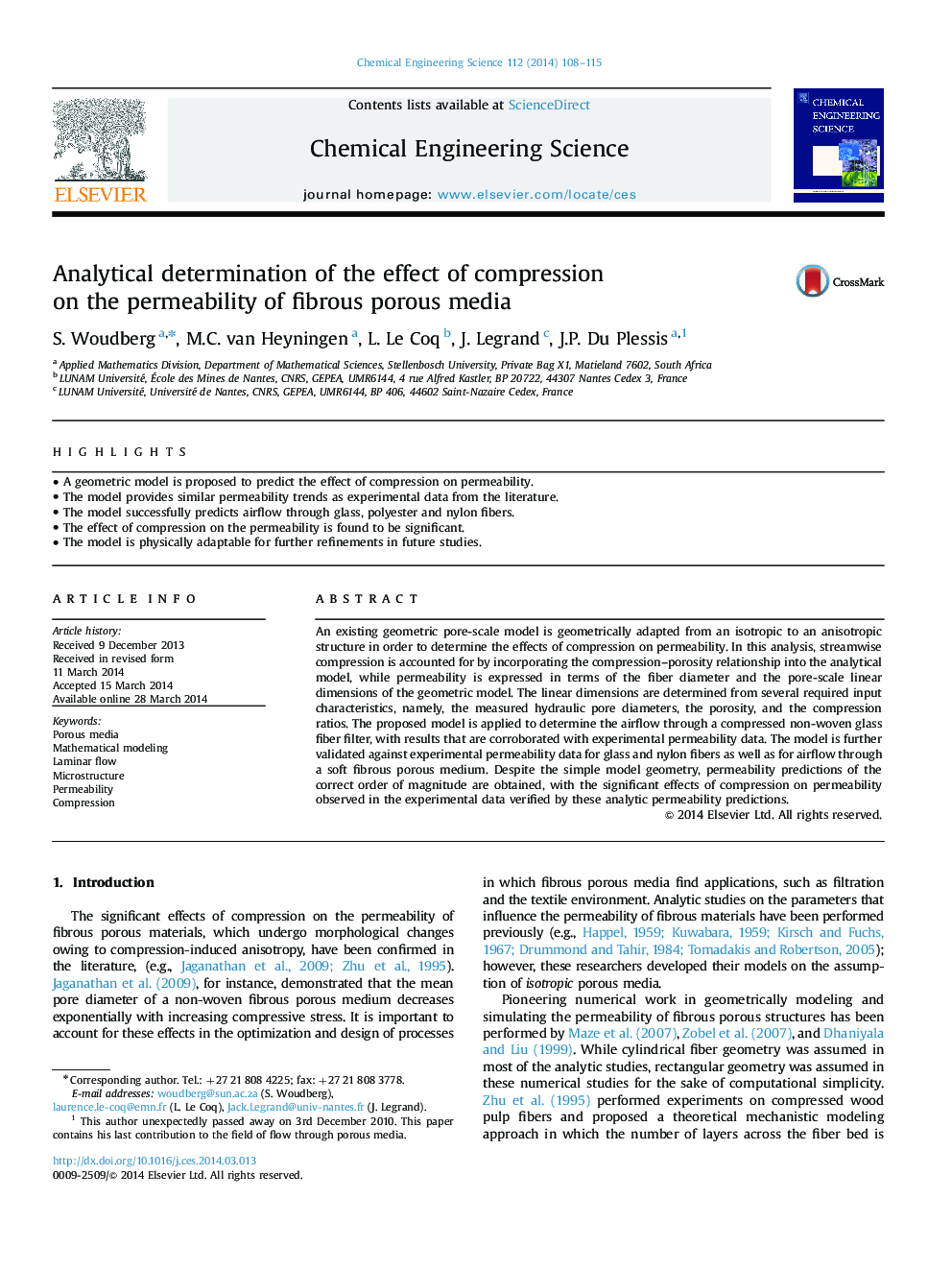| Article ID | Journal | Published Year | Pages | File Type |
|---|---|---|---|---|
| 6591317 | Chemical Engineering Science | 2014 | 8 Pages |
Abstract
An existing geometric pore-scale model is geometrically adapted from an isotropic to an anisotropic structure in order to determine the effects of compression on permeability. In this analysis, streamwise compression is accounted for by incorporating the compression-porosity relationship into the analytical model, while permeability is expressed in terms of the fiber diameter and the pore-scale linear dimensions of the geometric model. The linear dimensions are determined from several required input characteristics, namely, the measured hydraulic pore diameters, the porosity, and the compression ratios. The proposed model is applied to determine the airflow through a compressed non-woven glass fiber filter, with results that are corroborated with experimental permeability data. The model is further validated against experimental permeability data for glass and nylon fibers as well as for airflow through a soft fibrous porous medium. Despite the simple model geometry, permeability predictions of the correct order of magnitude are obtained, with the significant effects of compression on permeability observed in the experimental data verified by these analytic permeability predictions.
Related Topics
Physical Sciences and Engineering
Chemical Engineering
Chemical Engineering (General)
Authors
S. Woudberg, M.C. van Heyningen, L. Le Coq, J. Legrand, J.P. Du Plessis,
